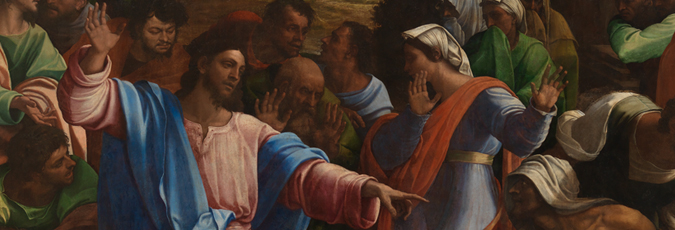Oil and water
In 1534, much to Sebastiano’s delight, Michelangelo returned to Rome to paint 'The Last Judgement’ (1536–41) on the Sistine Chapel’s altar wall. Yet the city where their friendship blossomed would also see its demise.
On what appears to have been Sebastiano’s advice, the vast wall for 'The Last Judgement' was prepared for painting in oil. However, in early 1536 Michelangelo ordered it plastered anew for fresco; the technique in which he completed it. He would later deny it, but he must initially have approved of the idea and perhaps even tried his hand at painting the wall in oil before deciding it did not suit him.
Michelangelo disowned Sebastiano, describing him to his confidantes and biographers as lazy, in part because he painted in oils. Sebastiano was indeed less productive in his later years but the austere, abstracted approach to form and intense spirituality he achieved, evident in his late ‘Visitation’ mural (about 1536–41), was highly original and would prove influential. He and Michelangelo had diverged from each other in more ways than one.

